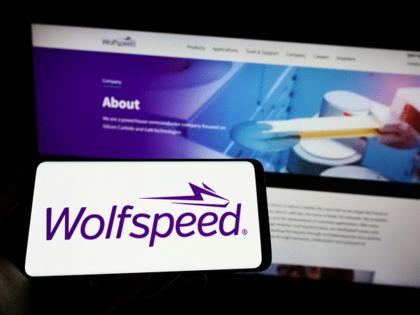Wolfspeed files for bankruptcy in effort to turn around NC chipmaker
Published in Business News
The 38-year-old Durham, North Carolina, semiconductor supplier Wolfspeed filed for Chapter 11 bankruptcy Monday, officially starting a reorganization the company says will allow it to shed billions in debt.
The filing in the Southern District of Texas comes eight days after Wolfspeed publicized a restructuring agreement that will give its creditors ownership once the company emerges from bankruptcy.
“We are continuing to move forward with our accelerated restructuring process to strengthen our capital structure and fuel our next phase of growth,” said Robert Feurle, Wolfspeed’s CEO, in a statement.
The company is implementing a prepackaged bankruptcy, meaning its plan has sufficient support from creditors to proceed. On Monday, Wolfspeed said its bankruptcy is backed by the holders of 97% of its senior secured debt and 67% of its convertible debt, plus the Japanese semiconductor firm Renesas.
Wolfspeed anticipates exiting bankruptcy by the end of September after it has slashed 70% of its debt, or approximately $4.6 billion. At that time, its new shareholders will appoint a new board of directors.
The publicly traded chipmaker is one of the Triangle’s largest employers and entered last summer with 5,000 employees worldwide — most of whom were based in North Carolina. But the company has since shrunk its headcount by more than 25% as its sought aggressive cost-savings.
Wolfspeed, originally named Cree, took on more than $6 billion in debt to fund its shift away from legacy LED and lighting divisions and toward exclusively producing a unique type of semiconductor called silicon carbide, which industry experts say performs more efficiently than standard silicon chips. In 2022, Wolfspeed opened a major fabrication plant in New York State and announced it would build a $5 billion materials plant in western Chatham County, near Siler City, which the company promised would eventually employ 1,800 workers.
Yet manufacturing delays, flagging electric vehicle demand and growing competition hamstrung Wolfspeed’s chip projections. Last year, the company announced plans to shut a device factory in Durham and shelved a multibillion-dollar facilities project in Germany. In November, Wolfspeed fired CEO Greg Lowe after seven years.
Last October, Wolfspeed received a federal CHIPS Act award that was contingent on the company first restructuring its 2026 debt. The Biden administration did not disburse this $750 million award, and the Trump administration has not advanced the federal program designed to bolster domestic semiconductor manufacturing.
What happens now for a bankrupt Wolfspeed?
With its first convertible debt payment due in May 2026, the potential of bankruptcy grew. This despite Wolfspeed ending March with $1.3 billion in cash, a significant amount for a company weighing Chapter 11. This spring, Wolfspeed rejected offers to restructure its 2026 debt obligation and avoid bankruptcy, opting instead for what it called a more “comprehensive” solution.
“(Bankruptcy is) an enormously powerful tool for businesses, but it’s also very flexible,” UNC law professor Kara Bruce said in an interview earlier this month. “So, it allows the company to come up with a plan to figure out how to resolve their financial distress and adjust their operations for the future.”
The Southern District of Texas, where Wolfspeed filed, was the third-most used bankruptcy court in the nation last year according to Congressional Research Service.
Wolfspeed has introduced a new website to address its bankruptcy, including a question and answer section for customers, vendors and investors. The company states it will deliver materials as normal and that Monday’s announcement will not impact employee pay or benefits.
As for what will happen to shares currently owned by investors, Wolfspeed said it “cannot comment on this at this time, but we are committed to providing updates as there is news to share.”
Last week, Wolfspeed said it hoped to remain listed on the New York Stock Exchange while in bankruptcy, though the company acknowledged it could be delisted from the prominent exchange. Its stock closed Monday at 40 cents a share. On Tuesday morning, shares rose above 80 cents a share.
©2025 The News & Observer. Visit at newsobserver.com. Distributed at Tribune Content Agency, LLC.












Comments